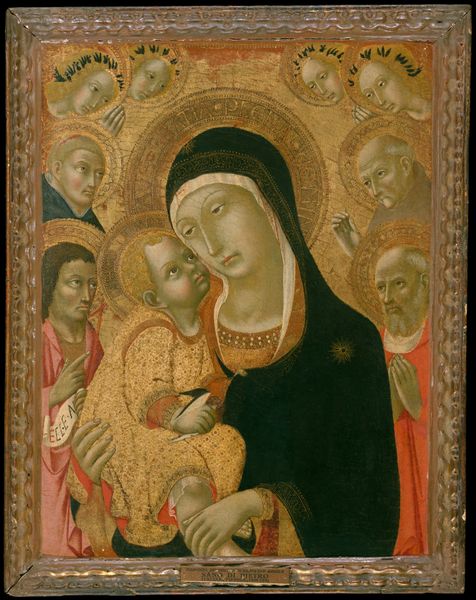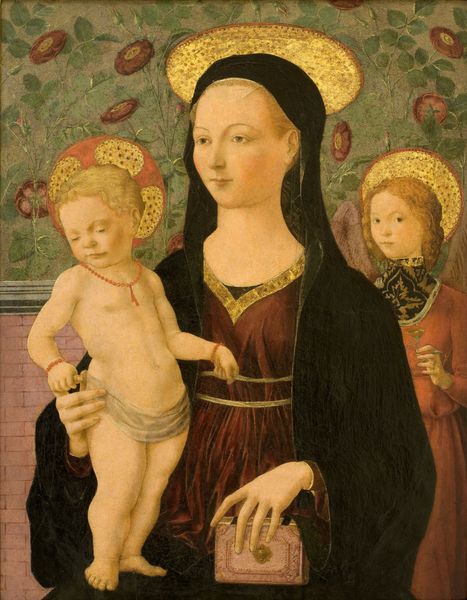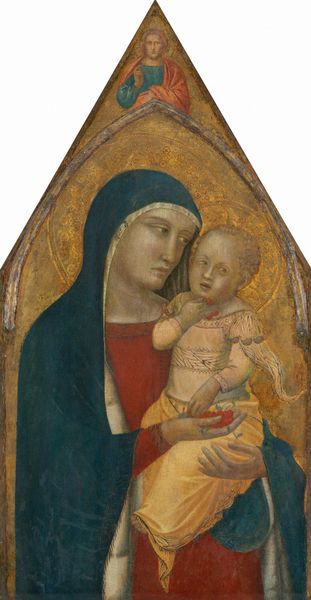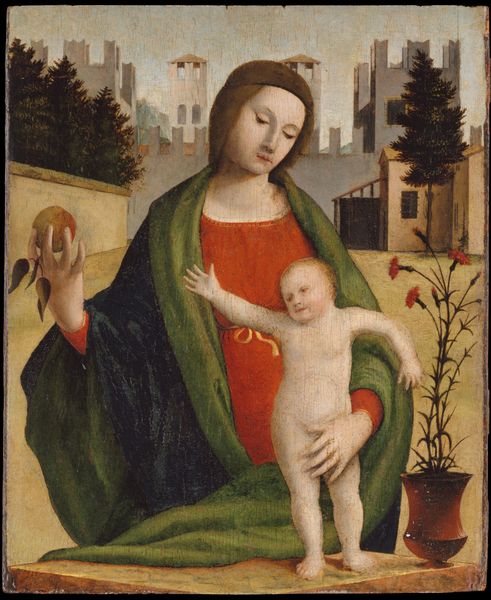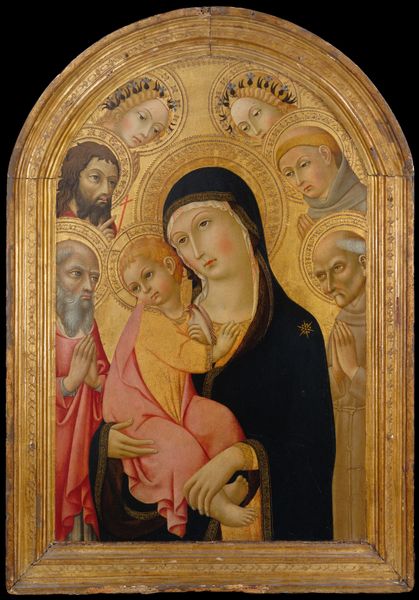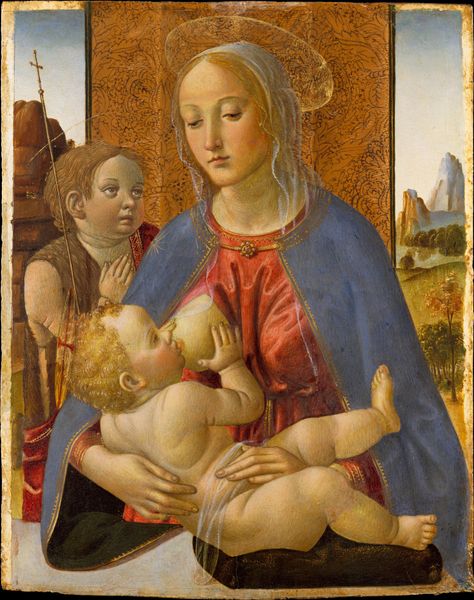
Virgin and Child with Saints Sebastian and Catherine of Alexandria c. 1490 - 1500
0:00
0:00
painting, oil-paint, wood
#
portrait
#
woman
#
medieval
#
painting
#
oil-paint
#
figuration
#
11_renaissance
#
oil painting
#
child
#
12_15th-century
#
wood
#
history-painting
#
italian-renaissance
#
portrait art
Dimensions: 52.3 x 35.4 x 2.6 cm
Copyright: Public Domain
Curator: Look at this devotional painting, "Virgin and Child with Saints Sebastian and Catherine of Alexandria" created around 1490-1500 by Neroccio de' Landi. It’s currently held at the Städel Museum. What strikes you first? Editor: That stark flatness! And that the figures almost seem superimposed rather than naturally placed. But then you notice those delicate gilding details—what do you think about the choices of material? Curator: For me, it’s the expressiveness. It’s about creating that ethereal, almost untouchable representation of divinity. Those saints, Sebastian and Catherine, flanking the Virgin and Child… their serene expressions pull you into this world of pious reflection. Editor: I’m compelled by the materials themselves – it is painted in oil on wood, and you just can't separate those substances from the piece. When examining these, I have to wonder what this painting meant as an *object* – who commissioned it, where was it meant to hang, who made the panel, who prepared the pigments, and how does its original placement shift the perception of the artist as genius? Curator: That’s fascinating; thinking of the context like that! What do you make of how the artist used line and form, especially compared to contemporaries in Florence who were, at the same time, trying to give their images that 'real' or naturalistic appearance? Editor: Well, consider that panel paintings like this were incredibly common in wealthy homes. Its materials situate it firmly within an artisanal workshop culture. Curator: And the almost doll-like proportions. While other artists of the Renaissance prioritized realistic renderings, de' Landi created his own unique vision; there is this world, and he offers his viewer passage. The effect isn’t clumsy but transporting; do you get that feeling at all? Editor: I concede there's beauty here – how these readily available materials are being skillfully manipulated and formed, reflecting complex patronage networks. Okay, I see your point; a blend of accessibility and artistry. Curator: Absolutely! Art is so great when it connects on all these levels. Thanks, I learned a lot today!
Comments
No comments
Be the first to comment and join the conversation on the ultimate creative platform.

